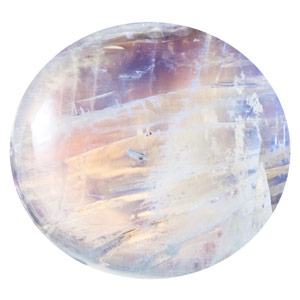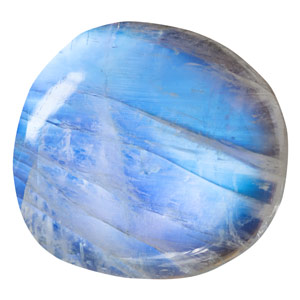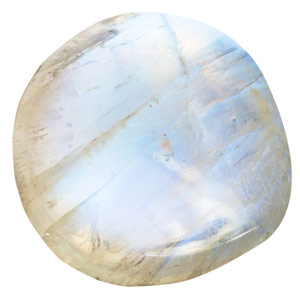orthoclase
Orthoclase, a captivating gemstone known for its delicate, shimmering appearance, owes its name to the Greek words "orthos" (straight) and "klasis" (break), referring to its tendency to cleave along distinct, right-angled planes when subjected to pressure or impact. This intriguing member of the feldspar mineral group is primarily composed of potassium aluminium silicate.
Orthoclase's geological origins are tied to igneous rocks, particularly granite, where it forms as a primary mineral. It also appears in pegmatite deposits alongside other valuable gemstones. Notable sources include Madagascar, Brazil, and the United States.
One of the most fascinating aspects of orthoclase is its optical effect known as adularescence, a shimmering, bluish-white glow that appears to float beneath the gem's surface. This ethereal phenomenon adds to its allure and is highly prized among gemstone enthusiasts.
Orthoclase's captivating play of light, combined with its intriguing name and unique optical properties, has cemented its status as a gemstone of subtle elegance and timeless charm.
Click on the terms in the table below to discover their meaning
Click on the terms in the table below to discover their meaning
| Name | Orthoclase |
|---|---|
| Category |
Tectosilicate |
| Chemical Formula | KAlSi3O8 |
| IMA Symbol | Or |
| Crystal System | Monoclinic |
| Crystal Habit | Commonly short prismatic, cleavable, granular or massive |
| Twinning | Common as simple, contact, or penetration twins according to the Carlsbad, Baveno, or Manebach laws |
| Cleavage | Perfect |
| Fracture | Conchoidal to uneven |
| Tenacity | Brittle |
| Hardness (Moh's Scale) |
6 (defining mineral) |
| Specific Gravity | 2.55 - 2.63 |
| Diaphaneity | Transparent to translucent |
| Colour | White, grey, pale yellow, orange, pink, green; colourless in thin section; may exhibit opalescence or schiller iridescence |
| Streak | White |
| Lustre | Vitreous to pearly |
| Optical Class | Biaxial (-) |
| Refractive index | nα = 1.518 - 1.520 |
| nβ = 1.522 - 1.524 | |
| nγ = 1.522 - 1.525 | |
| Birefringence | δ = 0.006 - 0.007 |
| Dispersion | Rd = 0.013 |
| Pleochroism | Absent |
| Clarity | Type III |
| Notable Varieties | Moonstone |
References
Mineralogical Society of America. (2001). Orthoclase. In J. W. Anthony, R. A. Bideaux, K. W. Bladh, & M. C. Nichols (Eds.), Handbook of Mineralogy. Chantilly, VA 20151-1110, USA: Mineralogical Society of America. Retrieved from https://
The Gemology Project. (2010, April 19). Feldspar. Retrieved from The Gemology Project: http://


